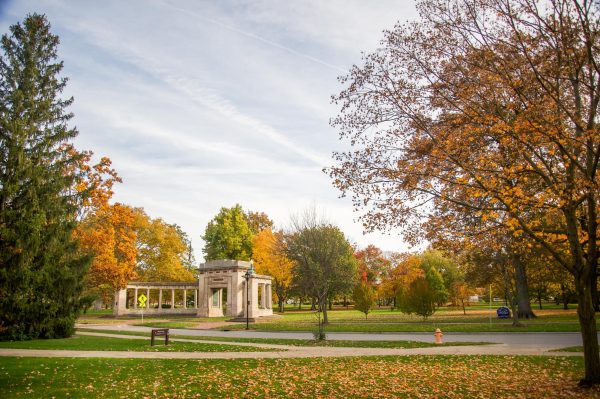Oberlin Should Start Respecting Football Rivalry with Hiram
On Nov. 3, the Oberlin Yeomen football team will compete against the Hiram College Terriers in Hiram, OH. Few spectators may realize the contest will be the 61st meeting between the two competitors since 1895. Those who bother to read the game program or listen carefully to the announcer may note that the all-time rivalry currently stands tied at 30–30. Even so, few people within either of the two college communities will be overly excited about which competitor takes the lead in this hard-fought rivalry beginning back in the Gilded Age.
The Oberlin College administration disregards the significance of the Hiram College football rivalry by choice. Hiram officials have reached out to the Oberlin administration twice in the past 12 years to discuss celebration of the rivalry with a trophy. Both proposals were quickly dismissed.
Despite the negative reaction of the Oberlin officials, history binds the two college competitors together. These two Western Reserve-based liberal arts colleges were founded before the Civil War, and both schools pioneered collegiate education for women. Lucretia Rudolph, an 1854 Hiram alumna, was one of the first women with a college education to become First Lady in the White House.
Every time Oberlin community members walk into the Cox Administration Building, they are entering a facility named after Jacob Cox, OC 1850, the best friend of Hiram’s most celebrated alumnus, U.S. President James Garfield. Cox and Garfield roomed together in Columbus when they joined the Ohio Senate. Both men eventually served as troop commanders in the Union Army, and they both went on to serve as statesmen in Washington, D.C. Cox and Garfield remained life-long friends, and their camaraderie reflects the warm-spirited goodwill that has always existed between Oberlin and Hiram.
Both colleges started their respective football programs during the 1890s. Oberlin has a rich football tradition with Coach John Heisman, victories over the Ohio State Buckeyes, and a celebrated dispute with the University of Michigan Wolverines. Hiram boasts a similar type of heritage with larger-than-life victories over the University of Akron Zips, the Kent State Golden Flashes, and the Bowling Green Falcons.
Both football programs have competed against the teams of superb research universities such as Case Western Reserve University, Carnegie Mellon University, and the University of Chicago. Hiram and Oberlin are also fellow members of the North Coast Athletic Conference along with other excellent Ohio-based liberal arts colleges such as Denison University, the College of Wooster, Kenyon College, and Ohio Wesleyan University. To say that the Oberlin Yeomen and the Hiram Terriers have a lot in common is to say the very least.
Celebrations of college rivalry raise the morale and increase the value of athletic programs for both fan bases, and they can even raise the spirits of entire communities. Many colleges and universities have wisely chosen to celebrate multiple rivalries because they bolster support for their athletic programs. Imagine the value of a rivalry celebration for a football game played between Hiram and Oberlin every November. A rather average annual contest might transform into the capstone victory of an entire season.
The NCAC requires its member institutions to advocate a sportsmanship pledge. The pledge is centered on fan behavior and stresses the value of being respectful and positive. Oberlin’s rejection of sharing a rivalry trophy with Hiram violates the spirit of the NCAC pledge, and the twice-made negative decision is a failing comment to the Oberlin College administration’s rectitude and judgement. The Oberlin community can now choose to bear the shame, or they can challenge the current administration to re-examine its values.
Jim Clarke,
Resident of Cuyahoga Falls, OH




